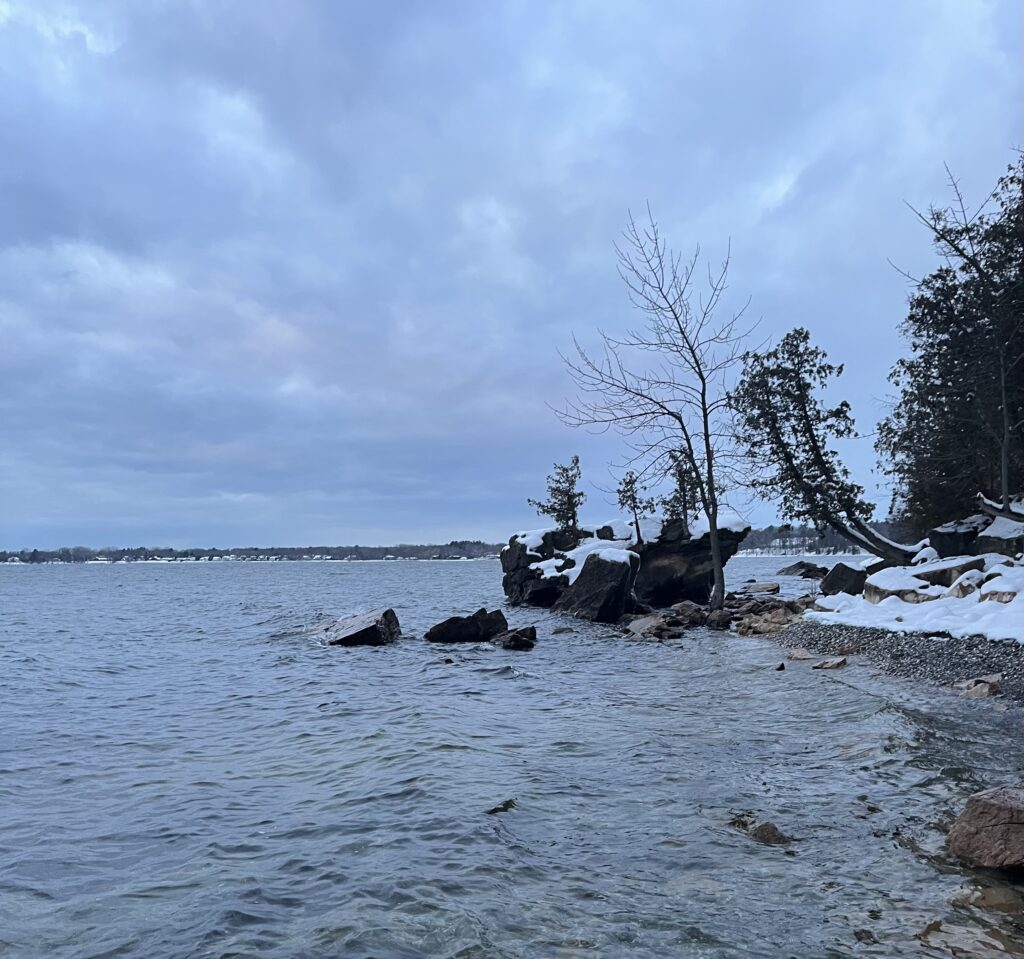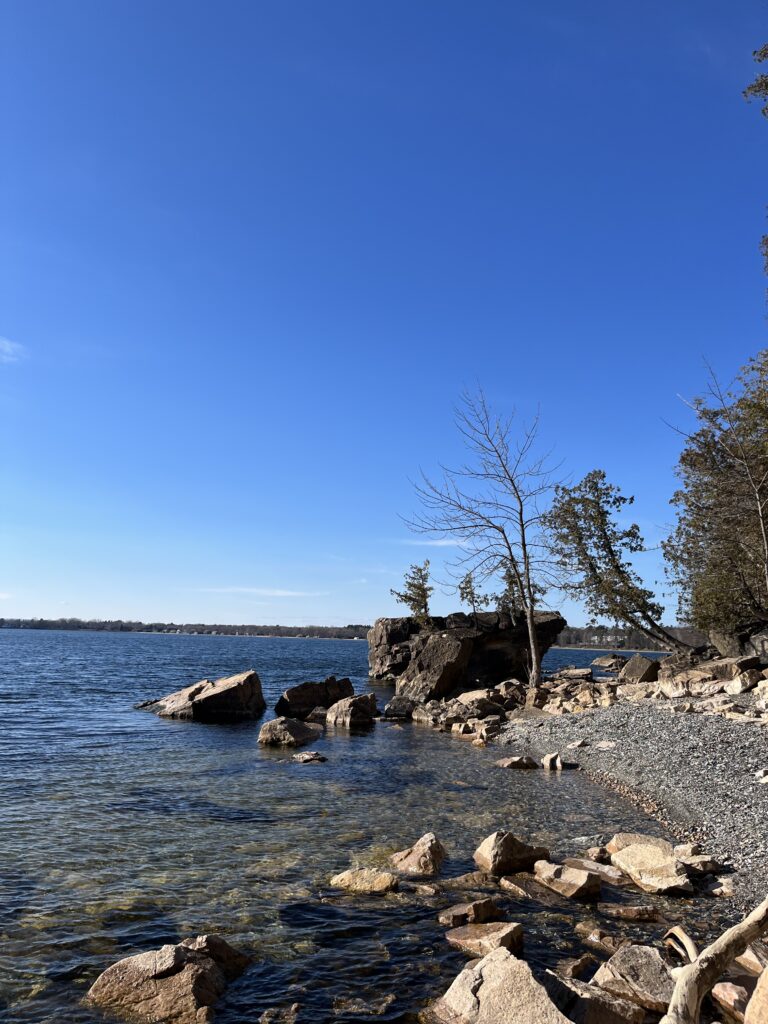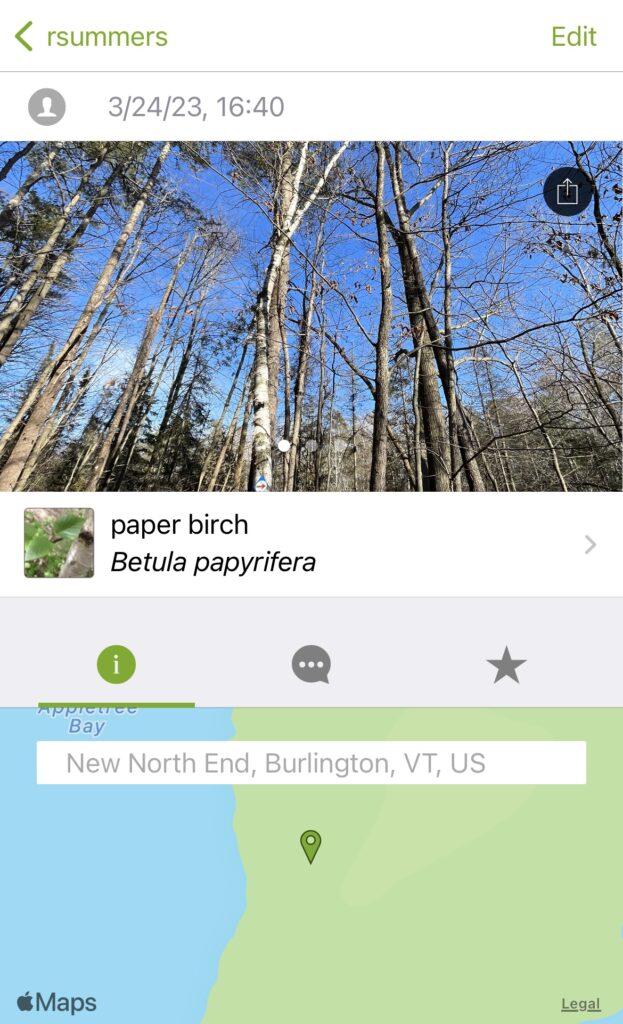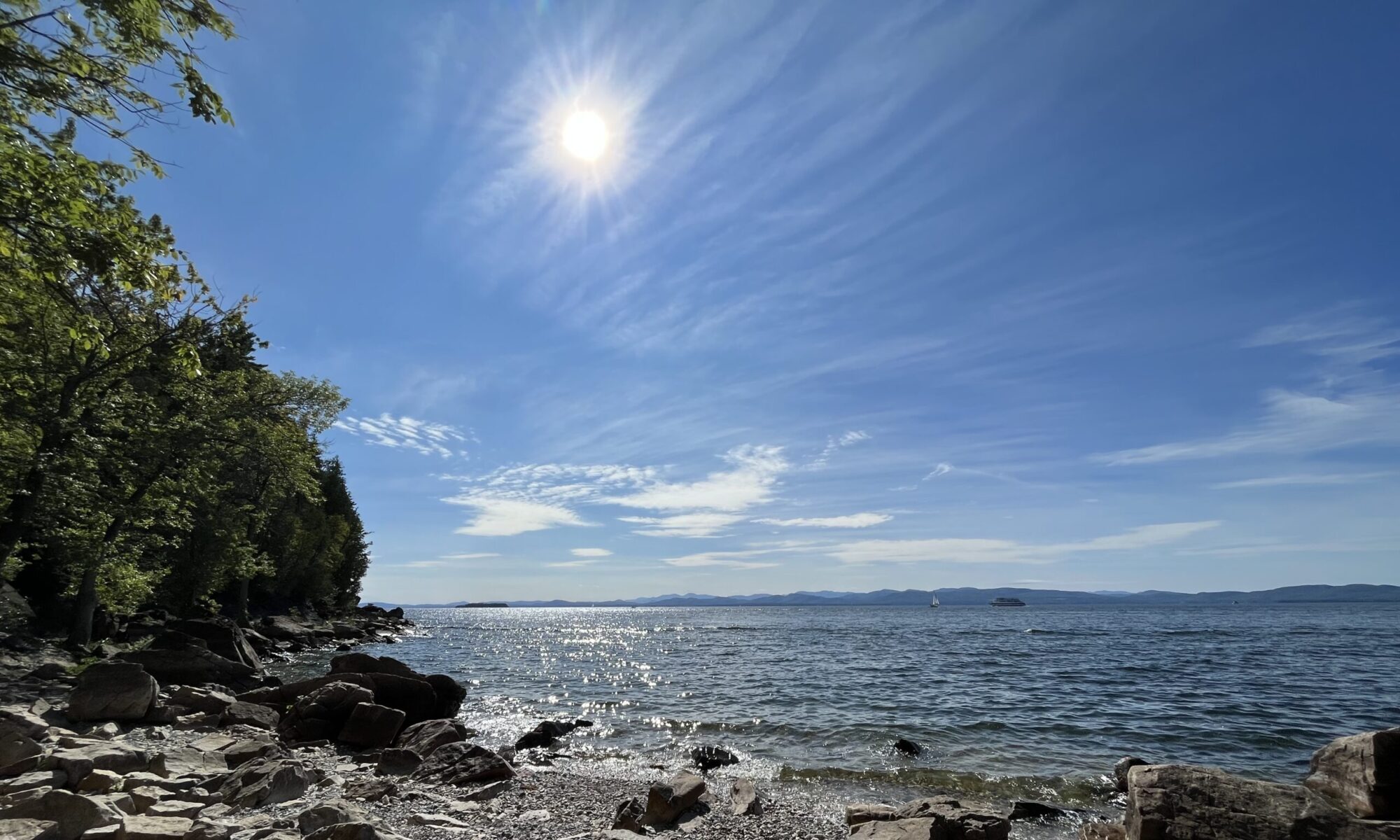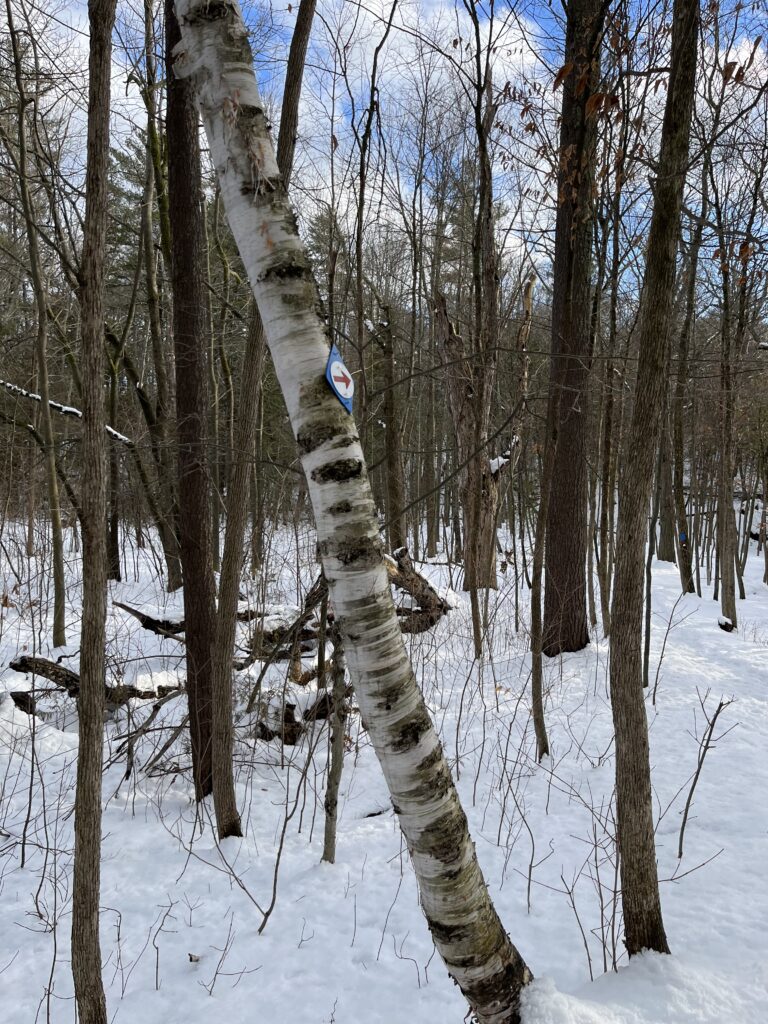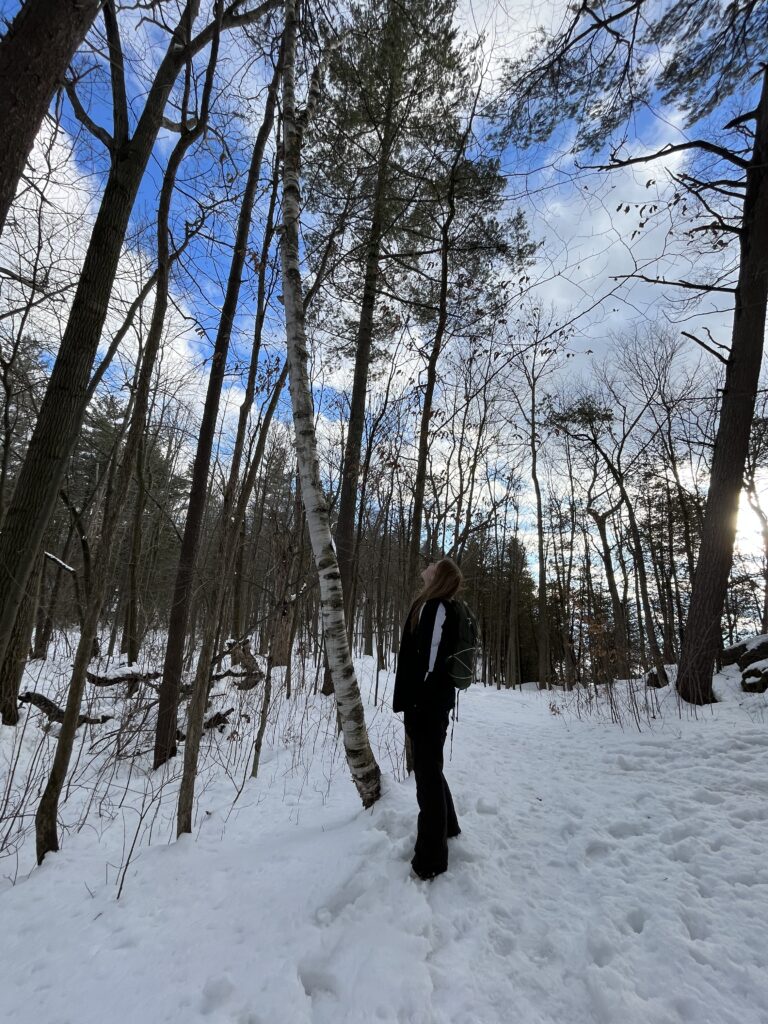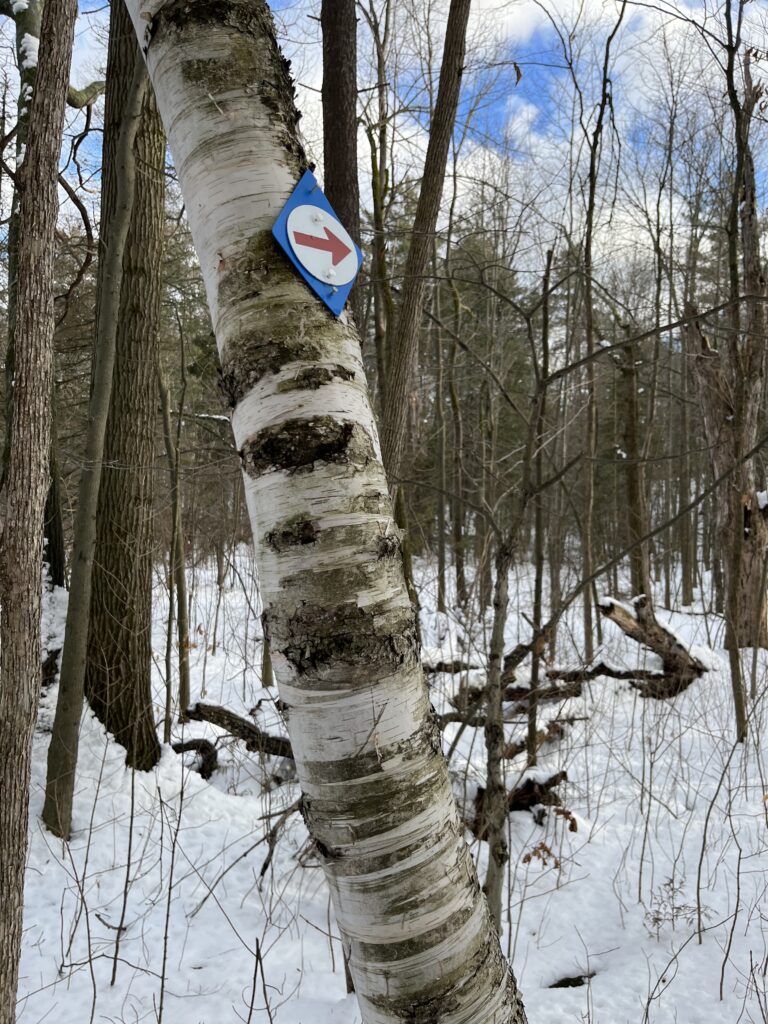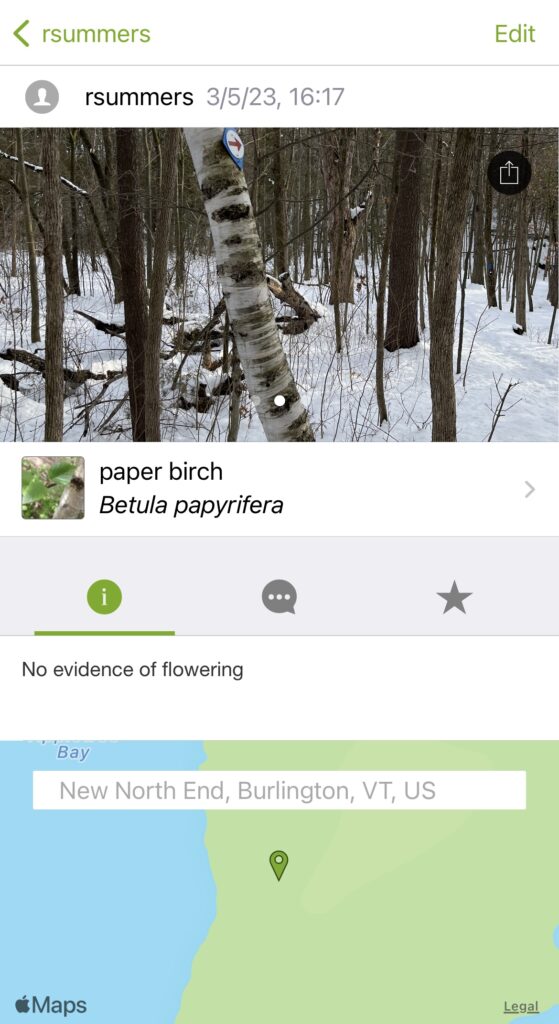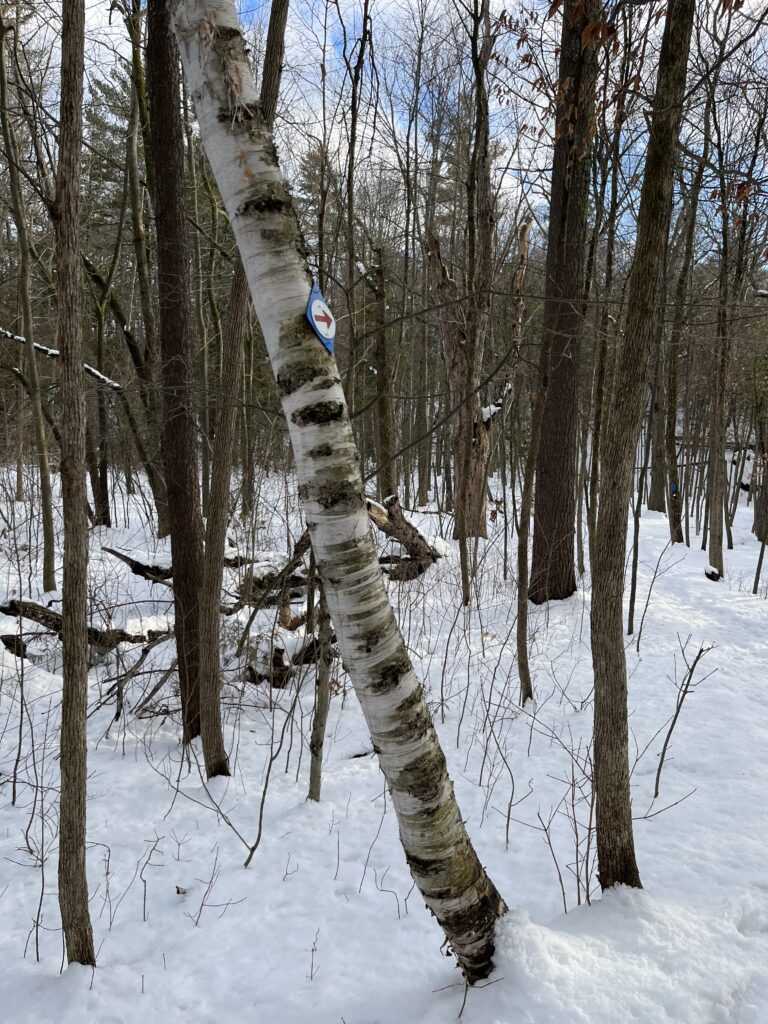
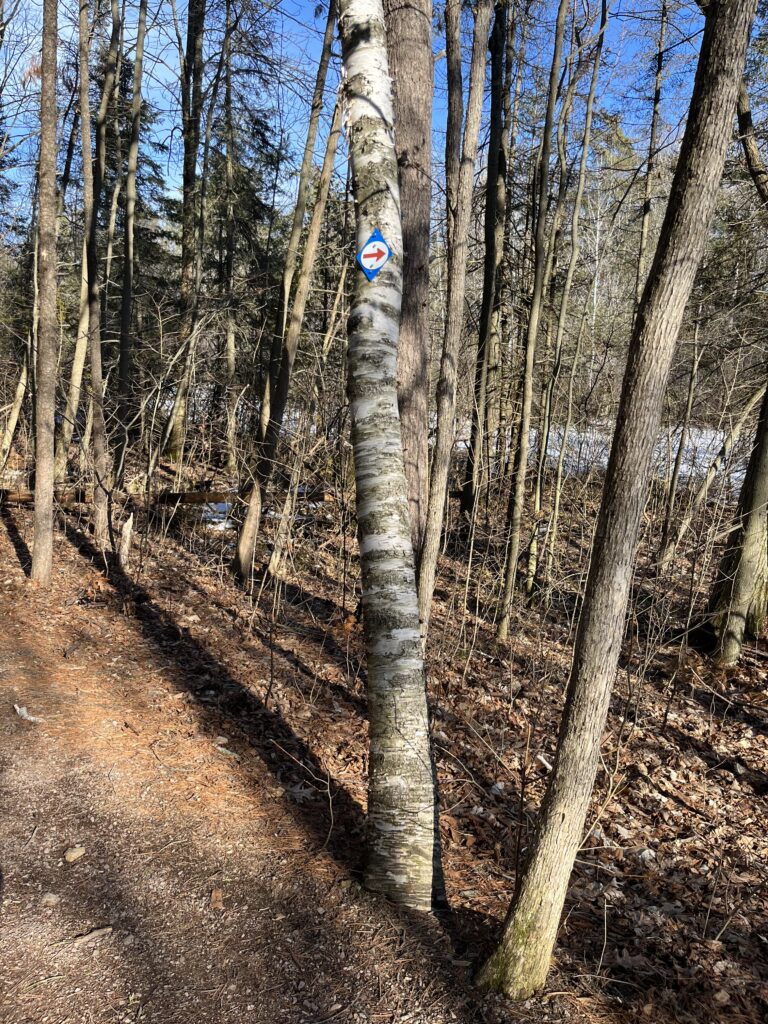
While at Rock Point for our most recent lab, my friend and I stayed behind afterwards to visit our phenology spots just a short walk away since we were essentially halfway there already. Since last visiting my phenology spot in early March, the most distinct changes are not necessarily those exhibited in the tree itself, but in its surroundings. That is, although there remains no evidence of flowering or flower budding as far as I can see, the birch’s habitat has undergone a dramatic shift since entering the spring season. As is evident in the photos included above, the majority of the snow covering the ground for my last visit has since receded, and a miniature waterfall of sorts has since replaced the slippery icy that once covered the rock steps leading down to the shoreline. In addition, the water level finally appears to have lowered back down to the level it used to rest at in our earlier phenology visits (see below).
